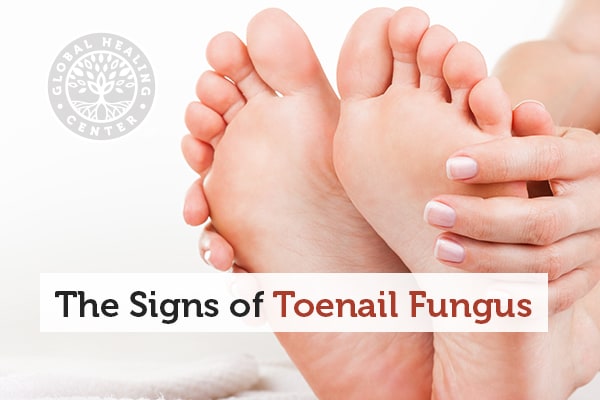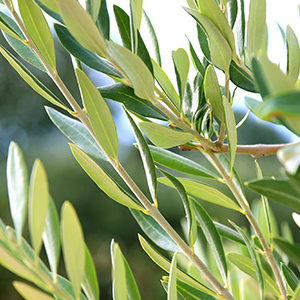
No one likes the looks of ugly toenail fungus. Brittle, distorted and discolored toenails can be the source of insecurity for many people, as well as a real hassle to get rid of. This form of fungus is difficult to fix, as several forms of the fungus are usually present in the infected toenail simultaneously.
Let's start by defining toenail fungus, listing its major causes and symptoms, as well as information on how you can naturally and effectively fight these types of infections.
What Is Toenail Fungus?
According to the Mayo Clinic, toenail fungus, or onychomycosis, is classified as an infection that occurs when a fungus finds its home in the toenails[1]. The fungal presence may appear as a white or yellow spot on the nail (it can also occur on fingernails, although is less common). If it's not dealt with, the spot grows larger and the nail begins to deteriorate, leaving a crumbling, thick, painful, discolored nail behind.
Signs of Toenail Fungus
The most common signs of toenail fungus are usually visually and painfully obvious. These symptoms may include:
- Thickened nails
- Foul odor in the nail
- Dull color in the nail, lack of the "usual shine"
- A separation of the nail from the nail bed (onycholysis)
- Dry, crumbly or brittle texture to nails
- Distortion in the shape of the nail
- Distortion in color of the nail, either a darker or lighter than normal
- Pain in the infected nail
Causes of Toenail Fungus
Microscopic fungi can find their way into the toenails under a variety of different circumstances. Usually, nail fungal infections occur when a type of fungus called a dermatophyte inhabits the nail. They can also be caused by a general mold or yeast infection in the toenail. Whether fungus, mold or yeast, all of these infections are created in warm, wet environments.
Places such as gyms, locker-rooms, hot-tubs, saunas, steam-rooms, swimming pools and showers, are hot-beds for these types of fungal infections. Just walking barefoot can cause you to get a fungal infection.
The dark warmth of your shoes and socks, particularly if you are sweating in your shoes, is also the perfect breeding ground for fungal infections. People are particularly vulnerable to fungal infections when they have tiny cuts between the nail and nail bed, as this opens the area up for the fungus to thrive. Toes are more vulnerable to infection than fingernails because of a lack of circulation in the area, as compared to the hands.
Who Is at Risk for Toenail Fungus?
Anyone can get a toenail fungal infection, but older adults are more at risk due to a greater lack of blood circulation to the feet. What is more, as we age, our nails begin to thicken, making us more susceptible to fungal invasion. Men are more at risk than women, and the tendency is passed on genetically.
Risk factors that increase the likelihood for nail fungus may also include diabetes, trauma to the nail, poor personal hygiene, athlete's foot, hyperhidrosis, peripheral vascular disease, continual exposure to water and conditions involving immunodeficiency.
Natural Remedies & Tips For Nail Fungus
- Make sure to change socks and shoes immediately after exercising
- Wear flip-flops in any public locker-room, the sauna, and pool-side
- If possible, do not wear shoes that prevent ventilation of the feet
- Buy organic cotton or hemp socks that readily absorb sweat
- Never walk barefoot in wet public places
- Deal with athlete's foot immediately, as the two conditions are linked
- Exercise to increase blood circulation to the toes, as your body's immune system will be better equipped to detect and eliminate any in-coming infections
- Keep the feet and toes well-cleaned
- Try soaking your toenails in 32 ounces of water with 3 ounces of organic apple cider vinegar and 1/4 cup Himalayan salt for 15 minutes daily
- Mixing organic tea tree oil with oregano oil and applying one drop to toenails before bed has been shown to work well.
- Mix one drop of 35% Food grade Hydrogen peroxide with six drops of distilled water, three drops of organic apple cider vinegar and one drop of DMSO. Apply to infected nails in the morning and before bed. This may burn slightly but seems to be one of the best and fastest remedies.
Supplements That Help Toenail Fungus
While addressing toenail fungus with the tips above is a good start, I would also recommend taking an herbal supplement called Candida Balance at the same time. This all-natural product will help kill off the fungus circulating in the blood, that may be contributing to your infection.
Candida Balance will help balance the toenail fungus internally, while the tips above are an external approach.
Do you see signs of toenail fungus on your feet? Be sure to let me know your results and feel free to post any other successful remedies you have used.
References (1)
- John J. Swierzewski D.P.M., Stanley J. Swierzewski III M.D. Fungal Nail Infection (Onychomycosis) Overview. 2000 Januray 1.
†Results may vary. Information and statements made are for education purposes and are not intended to replace the advice of your doctor. If you have a severe medical condition or health concern, see your physician.







